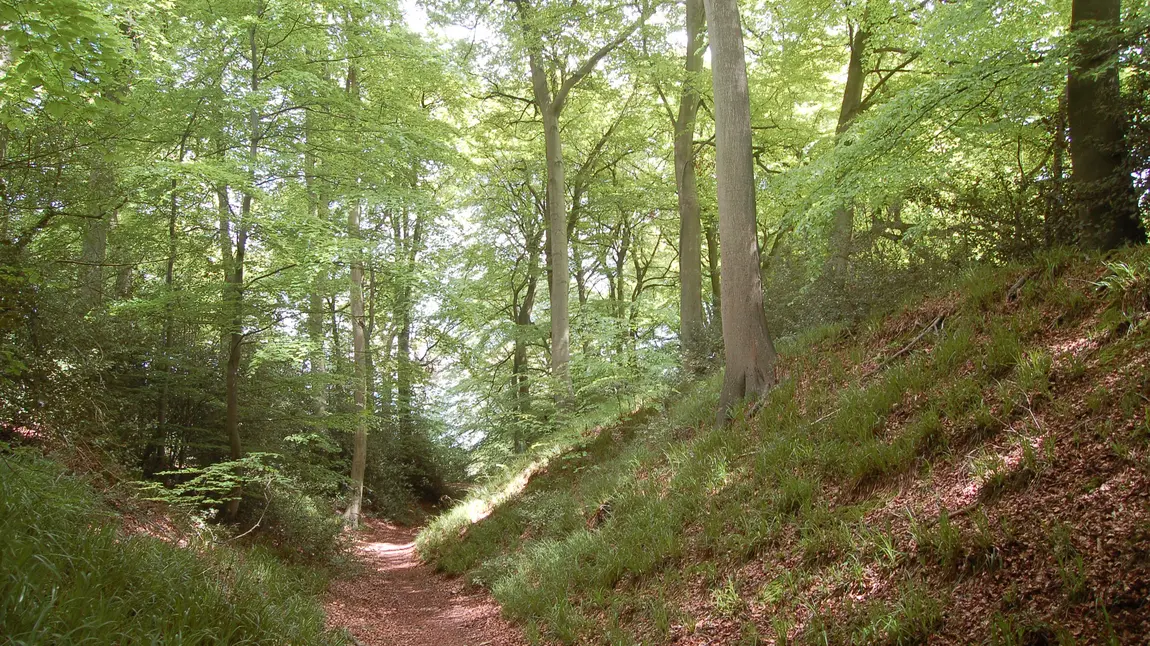National Lottery grant will help reveal prehistoric secrets of the Chilterns

The Chilterns Conservation Board has been awarded a £50,200 development grant by the Heritage Lottery Fund (HLF) and initial support for a full grant of £745,800 to develop an exciting new project to research, promote and conserve hillforts and other prehistoric features in the local countryside. This is a vital step towards preserving and raising awareness of the rich ancient history of the Chilterns – a designated Area of Outstanding Natural Beauty (AONB).
The Beacons of the Past – Hillforts in the Chilterns Landscape project will bring these ancient and mysterious features back to life and enable people of today to discover the fascinating history on their doorsteps. Plans include surveying and researching the hillforts and using laser technology to search for previously undiscovered prehistoric features in densely wooded areas. The project will shine a light on the Iron Age though a programme of events and educational activities and people will be encouraged to explore and enjoy these evocative sites. There will also be practical works to improve the condition and accessibility of known and newly discovered sites.
Thousands of years of human habitation have left their mark on the Chilterns and it has one of the densest concentrations of hillforts in the country, with 22 scattered across the hills. 21 of them are Scheduled Ancient Monuments. They were built around 2,500 years ago during the Iron Age by communities who lived, traded and secured their animals in them. The hillfort on Ivinghoe Beacon near Tring is one of the most visible, and has often been the source of artistic inspiration, but there are many hidden in woodland near places like Wendover, Princes Risborough and Henley-on-Thames.
The National Lottery grant will enable the Board to employ a development officer to work up the four-year project plan, which will culminate in a full bid for funding to HLF next year. The Board will be working closely with partners including the National Trust, the Chiltern Society, Forestry Commission and local authorities.
“This is a great achievement for the Conservation Board and means we have the opportunity for the first time to properly research and celebrate our wonderful wealth of hillforts in the Chilterns,” said Alison Doggett, landscape historian and member of the Board. “We can now get started on discussions with local partners and experts on how to get as many people as possible involved in our rich local history.”
Stuart McLeod, Head of HLF South East, said: “The hillforts of the Chilterns, those already known and loved and the ones yet undiscovered, provide an invaluable link to our Iron Age heritage. Thanks to National Lottery players we’re delighted to offer our support for this project which will reveal prehistoric secrets, enhance our understanding of these landmarks and protect this historic landscape for future generations to enjoy.”
Notes to editors
Chilterns AONB
The Chilterns AONB was designated in 1965, covers 833 square kilometres (326 square miles) stretching from Goring, Oxfordshire, to near Hitchin, Hertfordshire, and has a resident population of 80,000. It is one of 38 AONBs in England and Wales.
Chilterns Conservation Board
The Chilterns Conservation Board was set up following the passing of the Countryside and Rights of Way Act, 2000, to conserve and enhance the natural beauty and increase awareness and understanding of the Chilterns AONB. The Board, which also aims to foster the social and economic well-being of local communities, is supported by all local authorities in the area and by Natural England, The National Trust and the Chiltern Society.
Further information
Claire Forrest, Chilterns Conservation Board on tel: 01844 355521 and via email: cforrest@chilternsaonb.org